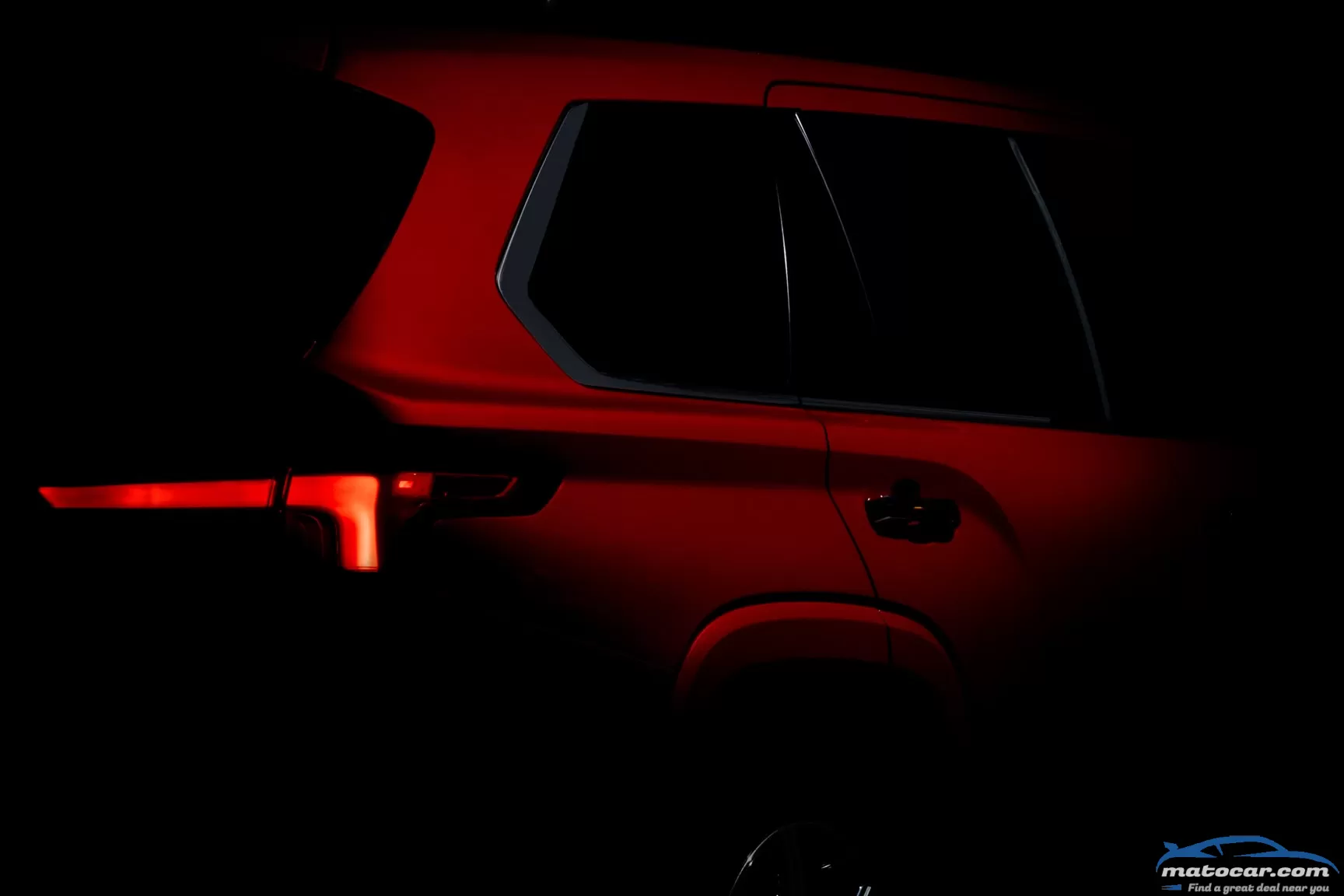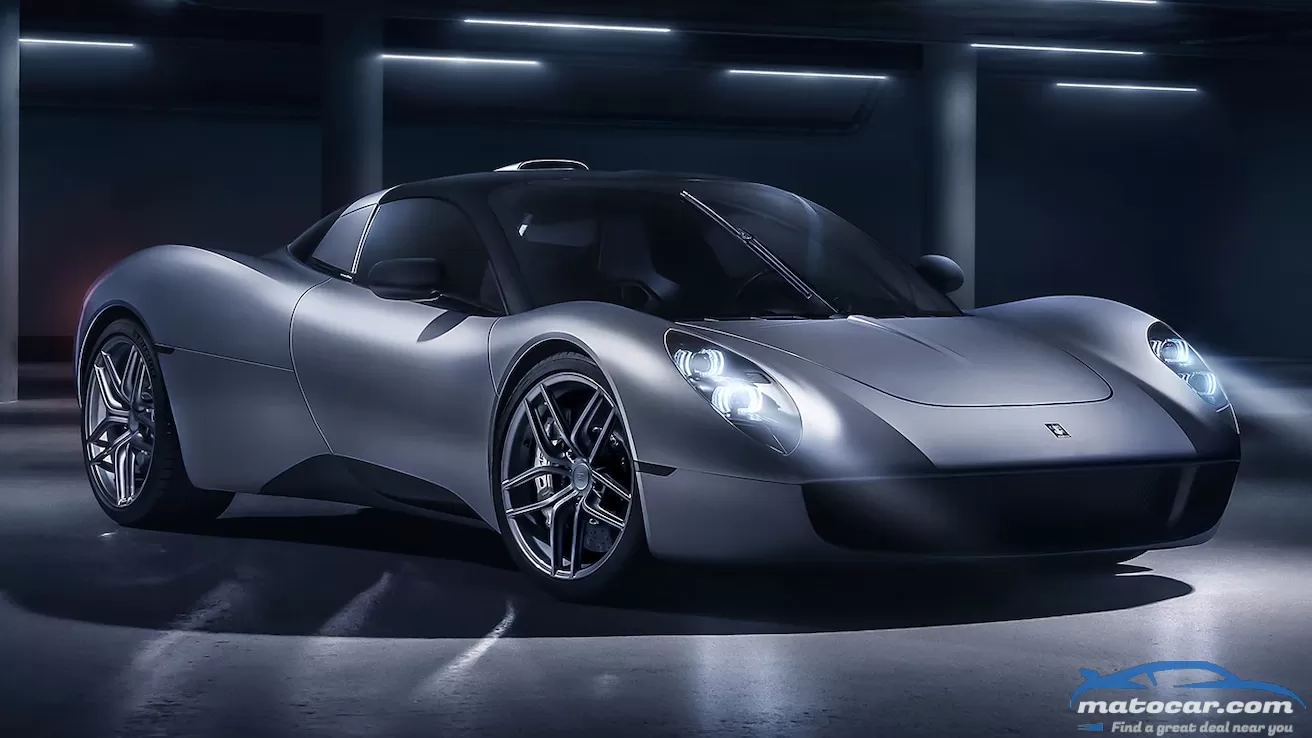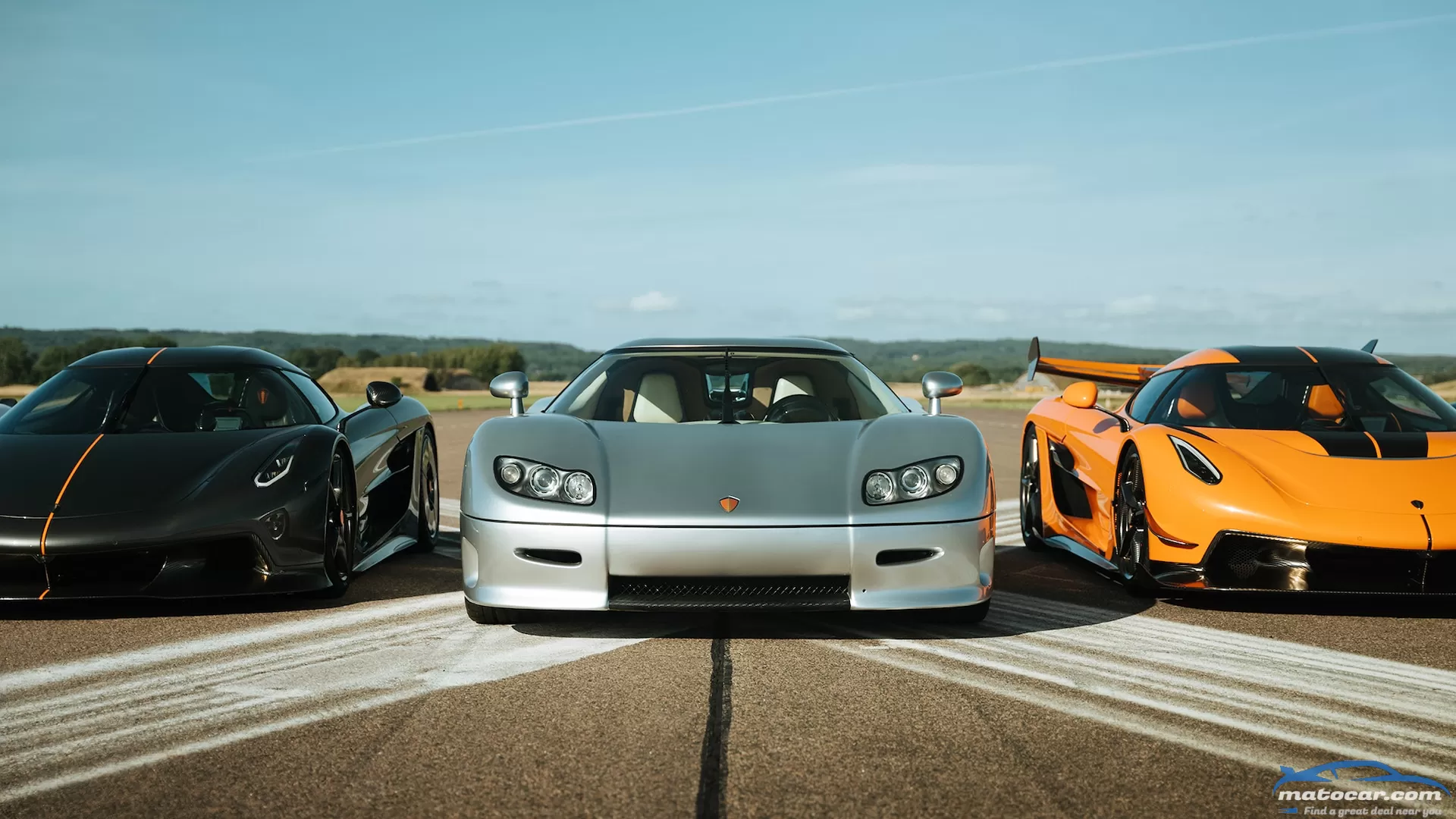Next-Gen Toyota Sequoia SUV Branches Out Toward Modernity

With the introduction of the 2022 Toyota Tundra, we began to wonder when we'd see the next Sequoia SUV come out. Considering the full-size three-row SUV is loosely based off of the full-size pickup, it'd make sense that a new Tundra might beget an updated Sequoia. Sure enough, it looks as though a new Sequoia is finally happening, as Toyota has begun to tease out the look of the next-gen large SUV. Even better? It looks like there might be a few stylistic references to early Sequoia models in the new one.
What We Get To See, So Far
From the looks of the teaser image above, the 2023 Sequoia's design is going to depart from the current, second-generation model, which has been around since 2007. The rear end shows just how much change to expect: Where rounded, doughy, early naughts bodylines once meandered there now live more muscular, straight edges. The tail lights also show a new "T" design fast growing familiar across the Toyota SUV lineup. They draw not only further forward and into the rear quarter panel, but also further across the liftgate.
The teaser also shows that the C-pillar has adopted a piece of black trim (instead of a body-color treatment) and brings the rear quarter window closer—physically, as we can tell thanks to some exposure editing—to the back of the rear doors. Toyota also gives the rear quarter windows a new arrowhead shape with a gray, silver, or chromed piece of trim between it and the body. Also getting some potential chrome treatment on this teaser image are the door handles.
The New Liftgate Design Is A First Gen Sequoia Callback
The bumper has also changed from a straight body separation on the body to now an angular one from the lower portion of the tail light to the molded overfender, however this separation does not continue into it. With our enhanced exposure edit, we also get a look at how the rear gate blends into the quarter panels, seemingly like the piece on the first-generation XK30/XK40 Sequoia. Instead of being completely encased into the liftgate, the rear window now curves around the gate and into the body, just like the 2001-2007 models' did.
Unfortunately, we can't see how the glass separates to form the liftgate as its separation is not evident in the edited image. It's possible that the last bit going into the body is just a piece of trim—either black plastic or darkly tinted glass bonded by adhesive—and the separation follows the line seen in the rear spoiler and taillight just as it did with the first generation Sequoia. Or it could be one whole piece that lifts up with the rest of the liftgate. Finally, we also get a quick tease of the wheel, which on the surely up-level trim highlighted here looks to be a black-painted aluminum wheel with a machined face.
Anything Else Teased?
For the moment, this is all Toyota is giving out. There is no news on available engines, drivetrains, suspension, TRD versions, or the like. We imagine that the new Sequoia will get the same engine and drive treatments as the newest Tundra short of the live axle rear. Despite the Tundra's change to coil springs, we just don't see the Sequoia backsliding from its multilink, independent rear suspension setup—recently adopted by segment heavyweights from General Motors, the Chevy Tahoe and GMC Yukon, and long a staple of Ford's Expedition—to the Tundra's live axle, however improved it might be.
Given how the Sequoia's teaser train has left the station, figure on the big SUV making its formal debut sometime soon.
You may also like
Is the GMA T.33 better than the McLaren F1? Gordon Murray smiles. "Oh, yes," he says. "The engine's better, the gearbox is better. It's lighter and has a slightly better power to weight ratio. The finish and the quality are much better."The McLaren F1, created by Murray in the early 1990s at the height of his fame as a rock star grand prix race car designer, is widely regarded as the seminal hypercar, a car that set absolute benchmarks for on-road performance. One sold last year for more than $20 million. The GMA T.33, Murray's new ultralight, driver-focused mid-engine coupe will be priced from about $1.85 million, plus tax, when production starts in 2024.In the context of today's McLaren F1 market, it sounds like a bargain.The T.33 is the follow up to last year's T.50, the car Murray designed specifically as a 21st century successor to the McLaren F1 and a halo for his GMA brand. Like the T.50, it's powered by a high-revving naturally aspirated V-12 and will be available with a six-speed manual transmission. But beyond elements of the powertrain—and the air conditioning system and interior switchgear—the T.33 shares nothing with the T.50. It's a completely different car, designed for a completely different purpose.The T.33's engine has less power, less torque, and a lower rev limit than the version used in the T.50 and T.50 Niki Lauda. Dubbed the Cosworth GMA.2 and distinguished by its yellow cam covers (the T.50's were orange and the T.50 Niki Lauda's red) it makes 607 horsepower at 10,500 rpm and 333 lb-ft of torque at 9,000 rpm, 47 hp and 11 lb-ft fewer than in T.50 spec. This is due to different cams, revised valve timing and engine mapping, and new intake and exhaust systems.The decision to lop 1,000 rpm from the engine's top end wasn't just a case of ensuring differentiation between T.50 and T.33. "To be really honest," Murray says, "the main reason is that 12,100 rpm in a 4.0-liter engine with valve springs is getting right up there on the ragged edge. Going to 11,100 rpm makes much more sense." Just for reference, in T.50 spec the engine makes peak power at 11,500 rpm.The other benefit is improved drivability. Murray says in T.50 spec the engine delivers 70 percent of its peak torque from just 2,500 rpm, but the T.33 version pumps out 75 percent of its peak torque at the same crank speed and 90 percent from 4,500 rpm. "I've never driven a V-12 with such low-down torque," he says of his test sessions in the T.50, "but the T.33 is on another level altogether."As in the T.50, the T.33 V-12 drives the rear wheels through a six-speed manual transmission designed and developed by British motorsport specialist Xtrac. The T.33's transmission, which weighs just 177 pounds, shares its ultralight casing with the T.50 unit, but all the internals are new.Unlike the T.50, the T.33 can be ordered with a paddle-shift transmission. Also developed by Xtrac, this transmission features the company's ingenious Instantaneous Gearchange System (IGS), which features an integrated ratchet and pawl mechanism between each gear hub and the main shaft so that two consecutive gear ratios can be selected and engaged simultaneously, but with only one set of gears driving. As there are no clutches to actuate, switching from one ratio to the next is, well, instantaneous, and there's no interruption to the torque flow.Murray says the paddle-shift T.33 will be significantly quicker than the manual car, both in a straight line and on the track, but notes that of the 60 cars already pre-sold—like the T.50, just 100 are being built—only three have so far been ordered with the IGS transmission.The T.33's chassis eschews the usual practice of bolting front and rear subframes to a central carbon-fiber tub. Instead, the car's central structure comprises Formula 1-style aluminum-core carbon-fiber panels bonded around aluminium tubes that run from front to rear. The carbon-fiber elements provide the essential torsional and bending stiffness, as well as a strong structure for crash safety, and the design eliminates the need for bolted joints."A bolted joint is messy and heavy, and it's flexible," Murray says. "No matter how well you do it, there's always a bit of joint movement at the transition from tube to carbon."Up front, supporting the suspension, steering rack, and stabilizer bar, is a single aluminum casting, which Murray won't describe in detail other than to hint it's similar in concept to the organic Bionicast structure used at the rear of the Mercedes-Benz EQXX concept. At the rear, aluminum tubes simply cradle the engine, which is attached with just four bolts. The rear suspension is bolted directly to the transmission, and although the engine is rubber-mounted to reduce noise, vibration, and harshness, a clever trapezoidal link setup is used to lock the engine and transmission into place when subjected to loads through the rear wheels.Murray reckons the innovative design of the T.33 chassis, which is loosely based on the iStream process he developed to build lightweight cars at low cost and high volume, makes it about 44 pounds lighter than a contemporary supercar chassis of a similar size. "It's taken two years to develop the technology, and we're thinking we might build the T.33 chassis ourselves to keep it in-house," he says. Like all Gordon Murray cars, the T.33 is light. Target weight is just 2,403 pounds, a mere 230 more than the T.50 despite the car being engineered to be built in both left- and right-hand drive and meeting all U.S. and European crash regulations. That means the T.33 doesn't need massive brakes, wheels, or tires. The standard brakes are carbon ceramic, with relatively modest 14.6-inch-diameter rotors in front and 13.4-inch units at the rear. The tires are relatively modest, too—235/35 Michelin Pilot Sport 4s on 19-inch forged wheels up front and 295/30 items on 20-inch wheels out back. Power steering is by way of a new hydraulically assisted system specially developed for the car.And like all Gordon Murray cars, the T.33 will have a relatively comfortable ride. "I never do stiffly sprung cars," Murray says. "I just don't like them. If you are going to drive it on a track, you're going to feel a bit of roll and pitch." However, for those customers who want to spend most of their time in their T.33s at track days, GMA will offer a sportier suspension setup. "The cars are so handbuilt, we can do virtually anything for the customers."It's difficult to judge from the photos, but the T.33 is about the same length overall as a Porsche 718 Cayman even though its roofline is 5.5 inches lower and its 107.7-inch wheelbase is an astounding 10.3 inches longer. The pictures don't show the subtlety of its design, either, the overall flavor of which has been inspired by Murray's passion for 1960s mid-engine sports cars such as the Ferrari 206 SP Dino and the Alfa Romeo 33 Stradale.The central driving position of the T.50 dictated a very cab-forward proportion. As the T.33 has a conventional driving position, which allows the pedals to be located farther rearward in the chassis, its cabin is, like those 1960s cars, more centrally located between the wheels. The wasp-waisted car also has a broad front air intake, pronounced haunches over all four wheels, and just the merest hint of a Kamm tail at the rear.The relatively clean and simple surfacing belies some truly clever design details. There are no visible door handles; access to the cabin is via touch-sensitive buttons in the Gordon Murray Automotive logos at the base of the B-pillar. The fuel and oil fillers are hidden behind the panels on the pillars. The small vent at the base of the vertically stacked headlights not only ducts air to the front brakes but also allows the car to pass low-speed crash requirements while echoing iconic 1960s headlight graphics."There's nothing just for styling's sake on the car at all," Murray says. "Every single element has something to do. " The wide front air intake, for example, houses all the cooling hardware, which means there's no need for unsightly and un-aerodynamic ducts in the body side. Extra cooling air is ducted into the engine compartment from under the car.The ram air intake above the cabin is another case in point. While in other mid-engine cars such intakes are part of the bodywork, in the T.33 it's mounted directly to the engine and stands proud of the bodywork so it can move. That eliminates the need for a flexible coupling, which means the internals of the entire intake can be kept perfectly smooth.The other benefit, Murray explains, is more subtle: "If the intake is flush to the roof, you get a boundary layer buildup [of slow-moving air], which renders the bottom slice of the intake quite useless. By having the intake separate and floating above the car, we bleed off the boundary layer into the engine bay, which is low pressure, and then we can have a smaller, more aerodynamic duct."Although the T.33 doesn't have the downforce of the fan-forced T.50, learnings from that car have been incorporated into the floor design. Two big diffusers at the front of the car help deliver downforce to the front axle. And while testing the T.50, Murray's team found the unique stepped diffuser at the rear of the car, which had been designed to work in conjunction with the fan drawing air through it, delivered 30 percent more downforce than expected with the fan switched off.A revised version of the stepped diffuser layout is now a feature of the T.33's floor. "It was a happy accident," Murray says of the discovery. "But it means most of the downforce is developed at the front of the diffuser, near the car's center of gravity."Combined with the two-thirds total downforce developed by the front diffuser, that means the T.33 doesn't need a splitter protruding from underneath the front air intake. The only active aero device on the car is a rear wing that tilts to maintain aero balance at high speed and flicks to near vertical under braking.All this careful attention to aerodynamic detail has resulted in one very practical benefit: luggage capacity. In addition to being able to accommodate two cases in its full-width frunk, the T.33 can also carry two each in either side of the car, in compartments between the door opening and the rear wheel. To access the compartments, the entire rear quarter panels are hinged at the rear.The GMA T.50, with its central driving position and fan-forced active aerodynamics, is a trophy car, the state-of-the-hypercar-art as expressed by the man who invented the concept 30 years ago. The GMA T.33 has been designed to similarly celebrate light weight and ultimate driving thrills, but also to have the ride quality and ground clearance and luggage capacity that allows it to be driven every day."I could see myself using one all the time," says Murray, whose current daily driver is the delightful, delicate Alpine A110. "If you had to have only one supercar, the T.33 is it."There's another reason to desire a T.33, too. More V-12-powered GMA cars are coming—another two are planned over the next decade—but all will have some form of electrification to enable them to meet emissions regulations. "This will be our last nonhybrid car," Murray says. "If anybody wants the last, beautiful V-12 without any hybridization, this is the one."
Koenigsegg is celebrating 20 years of making the wildest (and most Scandinavian) supercars in the world with a hell of a birthday present to itself: the CC850, essentially a remaster of its first car, albeit with a wildly clever manual/automatic transmission. That first car would be the CC8S, which founder Christian von Koenigsegg spent nearly a decade creating, starting with a very rough prototype and progressing, finally, to the company's first production model. The road from there to here has been fast and wild—it's hard to believe it's been two decades, in fact, a testament to how fresh and how bold the company's cars were when new. Read on for a guided tour through the marque's 20-year history, a quick way to understand how Koenigsegg became the inventive outfit it is today.
How Bad Is the New Mail Truck?A Stern Letter from the EPAA Measured Warning




0 Comments